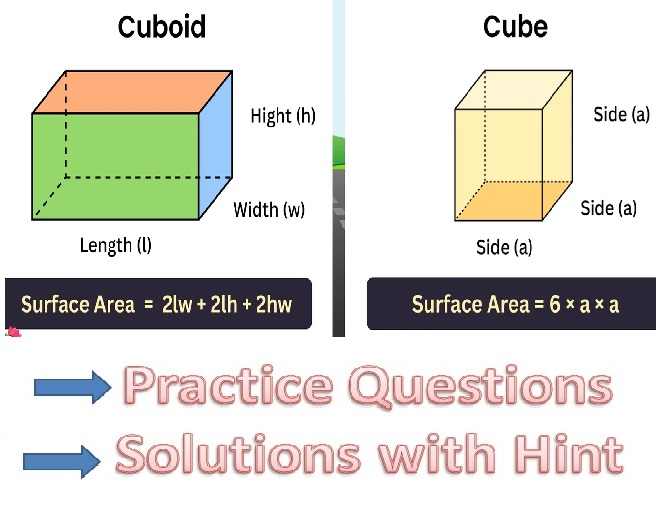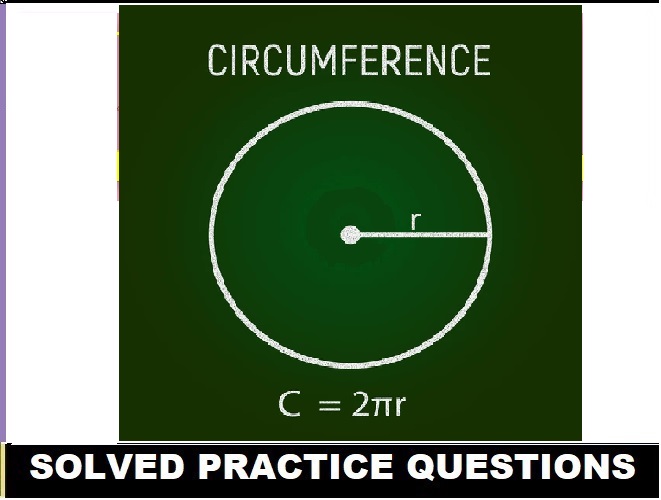Atmospheric Pollution Exe-8D Descriptive Answer Chemistry Class-9 ICSE Selina Publishers Solutions Chapter-8. Step By Step ICSE Selina Concise Solutions of Chapter-8 Atmospheric Pollution with All Exercise including MCQs, Very Short Answer Type, Short Answer Type, Long Answer Type, Numerical and Structured/Application Questions Solved . Visit official Website CISCE for detail information about ICSE Board Class-9.
Atmospheric Pollution Exe-8D Descriptive Answer Chemistry Class-9 ICSE Concise Selina Publishers
| Board | ICSE |
| Publications | Selina Publication |
| Subject | Chemistry |
| Class | 9th |
| Chapter-8 | Atmospheric Pollution |
| Book Name | Concise |
| Topics | Solution of Exercise – 8D Descriptive Answer Type (Ozone) |
| Academic Session | 2023-2024 |
D. Exercise – 8D Descriptive Answer Type
Atmospheric Pollution Class-9 Chemistry Concise Solutions
Page-145
Question 1.
Give the composition, causes and effects of acid rain.
Answer:
Composition:
When oxides of sulphur and nitrogen of air come in contact with water of rain, they form corresponding acids and constitute acid rain.
Causes of acid rain:
The cause of acid rain is the formation of mineral acids such as nitric acid, sulphuric acid and carbonic acid.
Effects of acid rain:
- Acid rain removes or leaches away elements in soil such as calcium and potassium, and soil thus loses its fertility. In this way, it damages forests.
- It makes water in lakes and rivers acidic and may no longer support aquatic life.
- Acid rain causes extensive damage to buildings and monuments or marble, limestone, slate and mortar. These materials become pitted and weakened mechanically. The Taj Mahal is one such example.
CaCO3 + H2SO4 → CaSO4 + CO2 + H2O
CaCO3 + 2HNO3 → Ca(NO3)2 + CO2 + H2O
Question 2.
How do you propose to control:
(a) carbon monoxide emission
(b) SOx emission
Answer:
(a) Carbon monoxide pollution can be controlled in the following ways:
- By switching over from internal combustion engines to electrically powered cars.
- Many pollution control devices are now installed in cars. Most of these devices help reduce pollution by burning gasoline completely. Complete combustion of gasoline produces only carbon dioxide and water vapour.
2C8H18 + 5O2 → 16CO2 + 18H2O - By using substitute fuels for gasoline: Natural gas [both compressed (CNG) and liquefied (LNG)] is now increasingly being used as fuel. Alcohols are other feasible substitutes.
- By using catalytic convertors
Nitrogen oxide is reduced to nitrogen and oxygen in the presence of finely divided platinum or palladium as a catalyst.
2NO N2 + O2
2NO2 N2 + 2O2
Carbon monoxide changes to carbon dioxide in the presence of finely divided platinum as a catalyst.
COCO2 + H2O
(b) SOx of sulphur emission can be reduced
- By using coal or oil which has low sulphur content.
- By using a scrubber, a device which absorbs gaseous pollutants.
Question 3.
What are the components of clean, dry air?
Answer:
| Pure Air Components | By Volume (% Proportion) | Concentration (ppm) |
| Nitrogen | 78.09 | 780900 |
| Oxygen | 20.94 | 209400 |
| Inert gases | ||
| Argon | 0.93 | 9300 |
| Neon | 18 | |
| Helium | 5 | |
| Krypton | 1 | |
| Xenon | 1 | |
| Carbon dioxide | 0.03 | 315 |
| Methane | 1 | |
| Hydrogen | 0.5 | |
| Natural pollutants | ||
| Oxides of Nitrogen | 0.52 | |
| Ozone | 0.52 |
Question 4.
What is air pollution? How does this pollution take place?
Answer:
Deterioration of air quality around us is called air pollution. Air pollution occurs because of the presence of gaseous pollutants such as oxides of sulphur, hydrocarbons, smoke, oxides of carbon, oxides of nitrogen, dust and particulate pollutants such as mist, spray and fumes.
Natural Sources:
- Volcanoes — Volcanoes release large amounts of air pollutants such as carbon monoxide, sulphur dioxide, hydrogen sulphide, chlorine, hydrogen chloride, hydrocarbons and particulates.
- Decaying vegetation — Microbial action on organic matter in soil releases a pollutant – nitrous oxide.
- Forest fires release the poisonous gas – carbon monoxide.
Man-made sources:
- Automobiles use diesel or petrol as fuel. Incomplete combustion of these fuels releases carbon monoxide, sulphur dioxide, hydrocarbons, nitrogen oxide and particulates like lead.
- Factories release carbon dioxide, sulphur dioxide, nitrogen monoxide and particulates.
- Industrial processes release different types of air pollutants, depending upon the type of process involved.
Question 5.
Why is cigarette-smoking harmful?
Answer:
Cigarette smoking is harmful not only for the one who is smoking but also for those sitting nearby, and so one should avoid smoking. Tobacco smoke causes lung cancer and asthma.
Question 6.
Describe the major air pollutants. How does carbon monoxide pollute our environment?
Answer:
Major air pollutants:
Pollutant are Carbon monoxide, carbon dioxide, chlorofluorocarbons, lead, ozone, oxides of nitrogen, sulphur dioxide, suspended particulate matter
carbon monoxide pollute our environment
The Carbon monoxide is a highly poisonous gas.When inhaled, it passes through the lungs directly into the blood stream. There it combines with haemoglobin, the substance which carries oxygen to body tissues. Because haemoglobin binds with carbon monoxide more than 200 times more strongly than oxygen, even low concentrations of carbon monoxide in air have magnified effects on the body.
It reduces the oxygen-carrying capacity of blood by an amount equivalent to the amount of haemoglobin converted to carboxyhaemoglobin.
Haemoglobin + CO → Carboxyhaemoglobin
Because the heart and brain are two organs most sensitive to oxygen depletion, they show the most serious effects of carbon monoxide exposure.
In high concentration, carbon monoxide may kill by paralysing normal brain action.
Question 7.
Explain the effect of sulphur dioxide on the atmosphere.
Answer:
Harmful effects of oxides of sulphur:
It causes headache, vomiting and even death due to respiratory failure.
sulphur dioxide destroys vegetation and weakens building materials/constructions.
It mixes with smoke and fog to form smog, which is very harmful.
sulphur dioxide is oxidised by atmospheric oxygen into sulphur trioxide (SO3) which combines with water to form sulphuric acid (H2SO4). Sulphuric acid is the cause of acid rain.
2SO2(g) + O2(g) → 2SO3(g)
SO3(g) + H2O →H2SO4(aq)
Question 8.
Explain the formation of ozone in the atmosphere.
Answer:
In the atmosphere, ozone is formed by the action of ultraviolet rays of the Sun on oxygen.
3O2(g)→ 2O3(g)
High-energy UV radiation break oxygen molecules into oxygen atoms.
O2 + Far UV → O + O
Oxygen atom reacts with oxygen molecule to form ozone.
O + O2→ O3
Net reaction is
2O2 + Far UV → 2O3
Question 9.
Explain the term ‘global warming’. State two ways by which global warming can be reduced.
Answer:
Global warming is the increase in temperature of Earth due to enhanced concentration of greenhouse gases (CFCs) in the atmosphere.
Two ways to reduce global warming:
- Plant more trees to increase green cover
- Minimise the use of automobiles
Question 10.
What is the cause of acid rain? Give any two impacts of acid rain.
Answer:
cause of acid rain
Sulphur and nitrogen oxides are emitted by burning fossil fuels. Such smoke and gases entering the atmosphere make a dilute soup of sulphuric and nitric acids. This falls on the land surface in the form of acid rain damaging the things on Earth.
impacts of acid rain
- Acid rain accelerates the decay of building materials and paints, including buildings, statues and sculptures which are part of our nation’s culture and heritage.
- Acid rain causes respiratory problems in humans, especially for people suffering from asthma. It may cause throat irritation, dry cough and severe headache.
Question 11.
Describe the methods of saving ozone layer.
Answer:
Methods to protect the ozone layer:
- Using alternative products such as HCFCs (hydrochlorofluorocarbons)
- Montreal Protocol, an international treaty, helps prevent ozone depletion.
— : End of Atmospheric Pollution Exe-8D Descriptive Answer Class-9 ICSE Chemistry Solutions :–
Return to Return to Concise Selina ICSE Chemistry Class-9
Thanks
Please share with your friends


